In these days of environmental concerns, global climate change and pipeline protests, the oil and gas industry has become the target of much criticism. This was not the case around the turn of the last century when, in the middle of the Texas Oil Boom, attention was focused on a small fishing village at the mouth of the Fraser River.
The existence of natural gas on Lulu Island had been known for millennia. The Musqueam fishing camp at Terra Nova was named sp`’elekw`eks (pronounced SPALL-uk-wicks), “Bubbling Water” in English, referring to the gas which was visible bubbling through the water in the slough. The Musqueam village at Garry Point was known as kw’áýò7xw’ (pronounced KWAY-ah-wh), meaning “Boiling (bubbling, churning) Water” in English, referring to the gas bubbling in the Steveston Slough.
Early European settlers in Steveston were also very aware of the gas deposits beneath Lulu Island. In 1891 the Steveston Enterprise Newspaper reported that the natural gas “forces its way through the water that accumulates in the wells and ditches where it is exposed and blackens the soil with heat when it is consumed.” Tossing a match into the bubbles would cause them to ” flash like powder”. Tipping a barrel over a gas vent would collect it and produce a continuous flame at a hole in the top of the barrel.
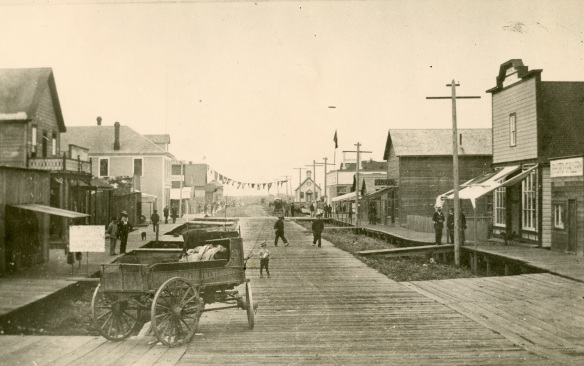
Steveston in 1891 looking North up 2nd Avenue. The sign on the left advertises the land auction of June 16. City of Richmond Archives photograph 1984 17 75 .

This ad from June 1891 in the Victoria Colonist invites investment in Steveston where you will “see the natural gas burning.”
Word of the gas spread with advertising for land auctions in the area. An ad in the Victoria Colonist invited people to bid on 400 lots available in Steveston, “The Key City on the Fraser River”. According to the ad, participants would see the natural gas burning, its presence sure to make the area a manufacturing centre and a leading city in the Province.
The presence of the colourless, odorless gas led to efforts to exploit this resource. In August 1891 the Steveston Natural Gas and Development Company was formed by a group of local entrepreneurs who attempted to start a well but found their expertise and capital were not up to the task.
The evidence of natural gas led to the speculation that large oil or coal deposits would also be found in the area. In 1904 an organization of Vancouver businessmen, The Steveston Land and Oil Company Limited, bought a lot on No.1 Road in Steveston, east of the end of Broadway Street and next to the Japanese Hospital. They hired some experienced oil riggers and engineers from the oilfields at Beaumont, Texas. A derrick was erected and drilling began at British Columbia’s first officially recorded well. The results were encouraging and by April the shaft had reached 1000 feet, passing through “shale, clay, and blue, greasy mud or gumbo”.
In June, The optimism spurred the company to look for more investors and ads were placed in newspapers announcing that 30,000 shares were available in the company. Hoping to attract sales, the company offered early buyers a “buy two, get one free” deal.
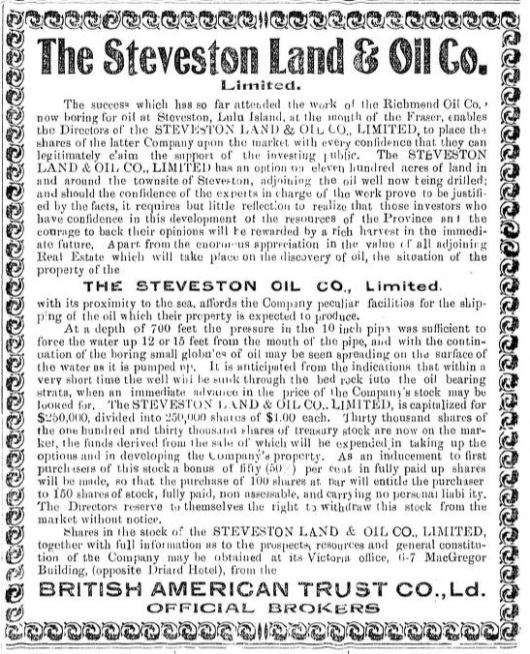
An ad from the Victoria Colonist, June 1904, inviting investors to buy stock in the Steveston Land and Oil Company.
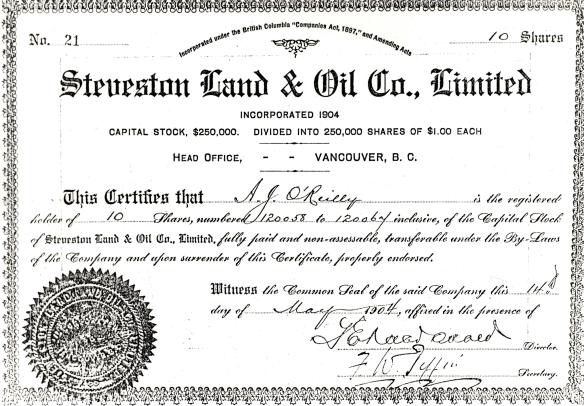
A copy of a share certificate for the Steveston Land and Oil Company. City of Richmond Archives photograph RCF 47.
In August the excitement grew when a large pocket of natural gas was reached by the drillers. The pressure sent sediment and water spouting high over Steveston. That evening a burn off flare was ignited to expend the gas and the resulting flame was 80 feet tall and 18 feet wide and could be seen from New Westminster. Reports claimed that the drillers expected to hit high quality oil soon, after which Steveston would take her place among the world’s great oil fields.
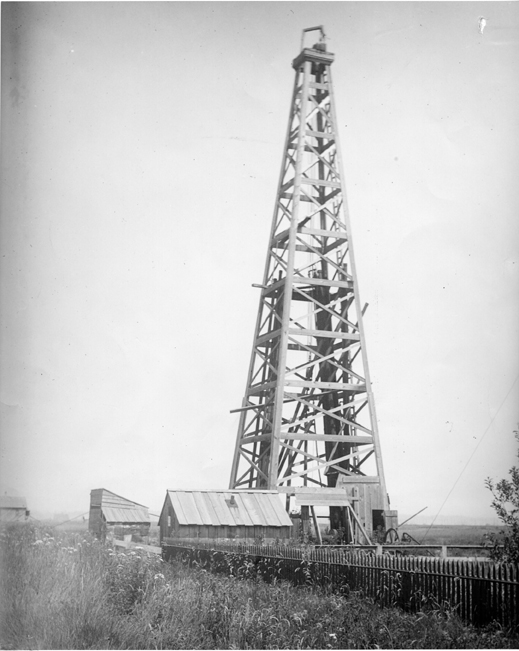
The drilling rig of the Steveston Land and Oil Company in 1904, B.C.’s first documented oil well. Sections of well piping can be seen leaning against the structure. Investors had high hopes that Steveston would be sprouting with derricks like this and black gold would be flowing from deposits under Lulu Island. City of Richmond Archives photograph 1978 15 10.
Despite all the optimism surrounding the search for oil, problems were arising. Oil was certainly present under Lulu Island, droplets had even shown up at the well, but the silt surrounding it was so flour-like that even with fine screens the piping would plug immediately. More expensive equipment and more specialized screens were shipped to the well but eventually the costs of operation overwhelmed the company and the project was abandoned in 1906.
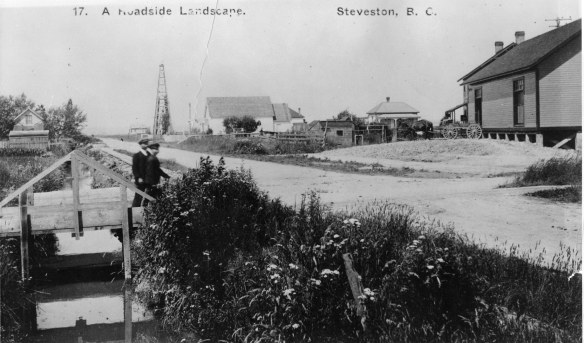
Looking north up No.1 Road in 1908 gives a view of the back of the Steveston rail station, a Roman Catholic Church and the now defunct drilling rig of the Steveston Land and Oil Company, City of Richmond Archives photograph 1978 5 7.
The halt of operations, while saving Steveston from the fate of becoming surrounded by oil wells and a busy tanker port, did not entirely stop the idea that natural gas might be a viable product. In 1930 a well was drilled on the farm of Henry Fentiman at 120 Garry Street. Mr. Fentiman’s house was located at the north side of the present Steveston Community Park, not too far from the location of the old oil rig.
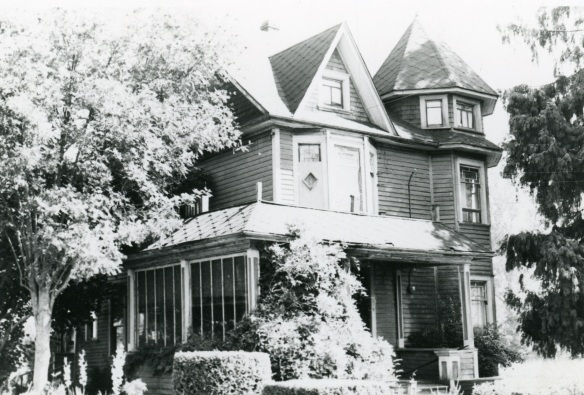
Henry Fentiman’s turn of the century mansion on his Steveston farm. City of Richmond Archives photograph 1986 54 1.
The International Pipe Line Company invested $17,000 in a plan to supply Vancouver with superior, odorless natural gas from Lulu Island, supplanting the manufactured gas used in the city at the time. The first test well was drilled to a depth of 850 feet, produced a flow of gas, but soon plugged with sand. A second well, drilled in 1931 to a depth of 730 feet and using finer screens to separate the sand, proved to be more successful and produced a steady flow of gas.
Once again the plan to capitalize on the energy resources of Lulu Island did not come to fruition, but Mr. Fentiman used the gas from the well for decades, easily heating his big, drafty turn of the century house, running his water heater and stove using the apparently unlimited supply of gas from his property. The only complication encountered with the system was the fluctuation in gas pressure caused by changing tides, the gas having to force its way through the whole depth of water in the well.
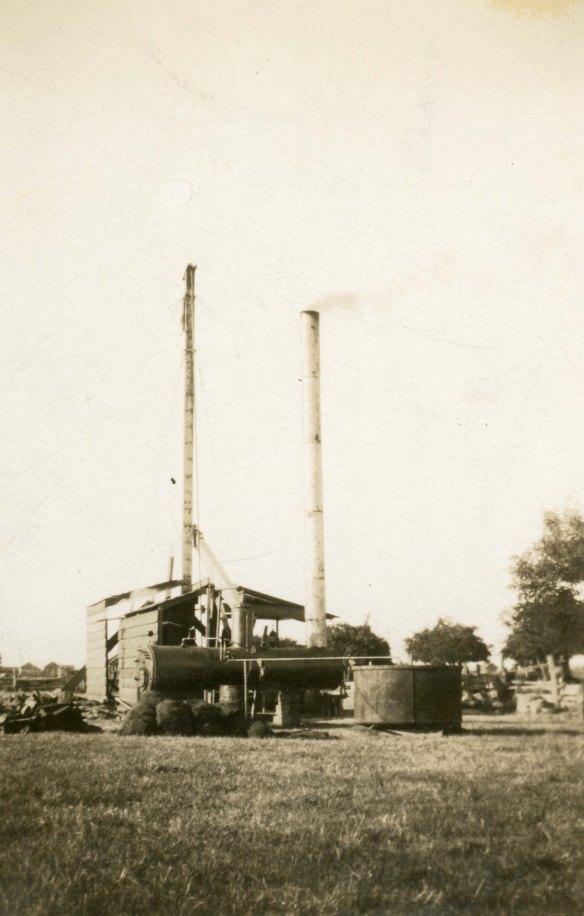
Henry Fentiman’s gas well, shown here in the 1930s, kept his house heated, water hot and kitchen cooking for decades. City of Richmond Archives photograph 1978 36 21.
In 1969 with the gas well now capped off, the Fentiman property was expropriated for $70,000 by City Council. The buildings were demolished in the late 1970s. The farm was sub-divided and exchanged or used for other purposes, the northern part now home to the Steveston Buddhist Temple, the Lions Club Senior Citizen housing occupies a portion of the old property and the southern part, where the Fentiman house and gas well were located were absorbed into Steveston Park. The natural gas and oil deposits that created so much excitement in the early 20th Century are still there, captured in the earth below Lulu Island but are unlikely to be looked for again.
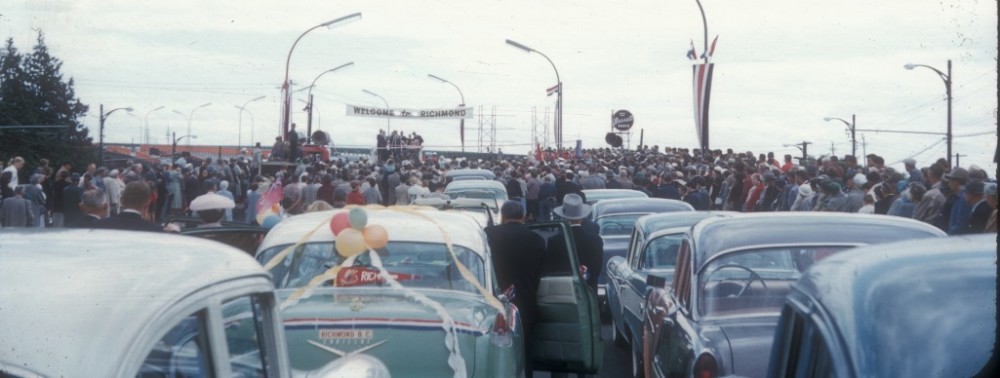
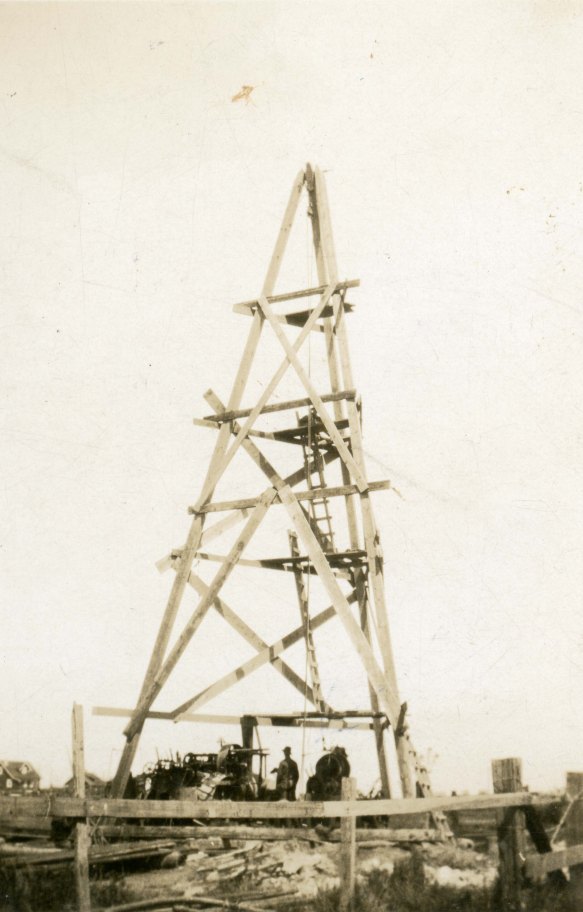
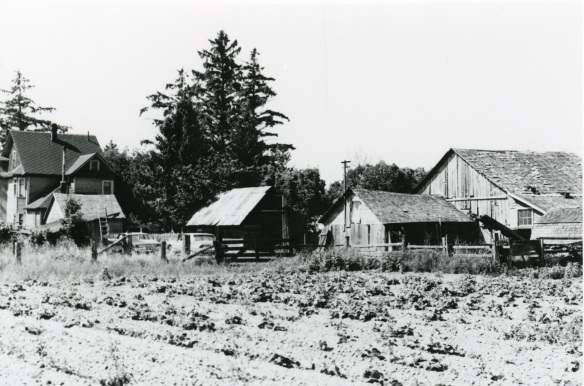
You must be logged in to post a comment.